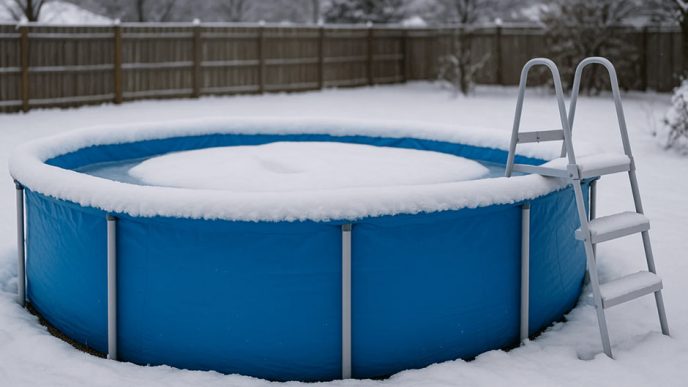Airflow, insulation, and system performance all influence how a home feels, yet most homeowners don’t notice the tell-tale signs. A clear pattern usually forms before anyone realizes the comfort level has shifted. Understanding what those signs mean helps create a path toward a stable indoor environment that supports predictable comfort.
Cities with varying daytime and nighttime temperatures make this topic even more relevant. Living in Corona, CA, brings warm afternoons, cooler evenings, and dry conditions that highlight any imbalance in a home’s heating or cooling. Rooms react differently depending on layout, insulation quality, and system strain. Pets, family routines, and sleep quality all change once temperatures stop staying consistent. With the right awareness, issues can be identified before they disrupt comfort throughout the home.
Uneven Heat
Uneven heat usually appears as rooms warming at different speeds or reaching different comfort levels during routine use. This inconsistency often reflects stressed equipment, blocked airflow paths, or system parts that no longer perform at full capacity. Homeowners may notice certain areas heating quickly while others barely respond. This pattern creates pockets of discomfort that influence how people move through the home. System strain becomes more noticeable during cooler months, especially in homes that rely heavily on heating throughout the day and evening.
Concerns grow further once the furnace begins showing signs of age or wear. At this point, homeowners start exploring support options, including furnace repair in Corona, CA, with the help of experts, to bring the system back to dependable operation. Professional evaluation helps identify airflow issues, mechanical concerns, and temperature inconsistencies that affect comfort.
Worn Insulation
Worn insulation contributes to temperature swings that appear without warning. Rooms may lose heat quickly, retain warmth unevenly, or react strongly to outdoor conditions. This creates conditions where the HVAC system must work harder to balance the space. Signs often include drafts, shifting comfort levels throughout the day, or sudden cold spots that disrupt normal routines. Over time, insulation gaps allow conditioned air to escape, forcing the system to cycle more frequently.
Addressing insulation concerns helps restore consistency. A quick inspection of attic spaces, walls, or crawl areas reveals areas that require reinforcement. Fresh insulation creates a more predictable indoor environment. It supports steady comfort by reducing the strain placed on heating and cooling systems.
Hallway Differences
Hallways frequently expose temperature imbalance before other spaces. Narrow layouts, limited vents, and lower airflow create conditions that respond poorly to heating and cooling. Homeowners often notice that hallways stay cooler in winter or warmer in summer, even when nearby rooms feel comfortable. This difference interrupts the natural flow of the home and signals that air distribution may not be functioning as intended. Hallway temperature patterns often reveal deeper issues within the system.
Improving airflow through better vent placement, duct adjustments, or system balancing helps reduce this discomfort. A professional assessment can identify restrictions or design issues that limit movement through the central areas of the home. Once airflow is restored, hallways begin matching the comfort level of surrounding rooms.
Fan Dependence
Frequent fan use suggests that the core system cannot maintain comfort on its own. Homeowners may find themselves running ceiling fans or portable fans throughout the day in an attempt to regulate temperature. As such, this becomes a clear indicator that air is not circulating well enough to support consistent comfort. Fans can provide temporary relief, but they do not correct underlying problems. Continued reliance points to issues in airflow, duct design, or HVAC performance.
A deeper look at system layout and performance often helps identify the bottleneck. Adjusting vents, repairing ducts, or improving filtration can support better circulation. Once airflow is restored, fan use declines naturally because the home begins responding to heating and cooling as expected.
Slow Response
A home that warms or cools slowly signals that the system is struggling to reach the set temperature. Homeowners may adjust the thermostat with the expectation of a quick response, only to find the home reacting at a sluggish pace. In turn, this creates discomfort during morning routines, evening wind-down periods, or days with significant temperature change. Slow response times often reflect system fatigue, airflow blockages, or older components that no longer perform effectively.
Improving system performance requires identifying what is slowing the process. A technician can evaluate filters, fan motors, and duct efficiency to pinpoint the cause. Once the issue is corrected, the home responds to thermostat adjustments with more predictable timing.
Night Discomfort
Bedrooms often reveal temperature imbalance through disrupted sleep. A room that shifts from warm to cold or fails to reach a comfortable level throughout the night can affect rest and overall well-being. Sleep spaces are sensitive to airflow issues because they tend to rely on closed doors, minimal movement, and steady heating or cooling. Any inconsistency becomes more noticeable once the home settles for the evening.
Tackling night discomfort starts with evaluating airflow, vent placement, and insulation around the bedroom area. A balanced system helps maintain consistent temperatures even with doors closed. Adjustments in duct layout or nighttime thermostat settings can guide the home toward steadier conditions. Once the balance is restored, bedrooms hold temperature in a more predictable way.
Pet Reactions
Pets often reveal temperature imbalance before humans do. Animals gravitate toward warmer or cooler areas in response to airflow patterns that homeowners may not immediately notice. A dog that always curls up near certain vents or a cat that avoids particular rooms can signal uneven heating or cooling. Such behaviors provide clues about how air moves through the home and which areas lack consistency. Pets react instinctively, and their habits can highlight deeper issues in the system.
Homeowners can use this insight to identify problem zones. Observing pet behavior helps narrow down areas needing airflow adjustments or insulation support. Once the changes are made, pets begin spreading out naturally rather than clustering in specific spots.
Allergen Circulation
Uneven temperature often goes hand in hand with inconsistent air movement, which allows allergens to settle in certain areas of the home. Dust, dander, and outdoor particles tend to gather where airflow is weaker or more turbulent. And so, this creates pockets that influence comfort and indoor air quality. Families may notice sneezing, irritated eyes, or general discomfort concentrated in specific rooms. Temperature imbalance contributes to this pattern by disrupting the normal distribution of air throughout the home.
Improving airflow and filtration helps stabilize both temperature and air quality. A system review can identify blockages, filter concerns, or duct issues that limit circulation. As airflow evens out, allergens distribute less aggressively and become easier to manage.
Temperature imbalance affects comfort, air quality, and the daily pace of the home. Recognizing the warning signs helps homeowners act before issues expand. With the right adjustments to heating, cooling, insulation, and airflow, a home can regain its consistency and support a more comfortable, reliable environment.














